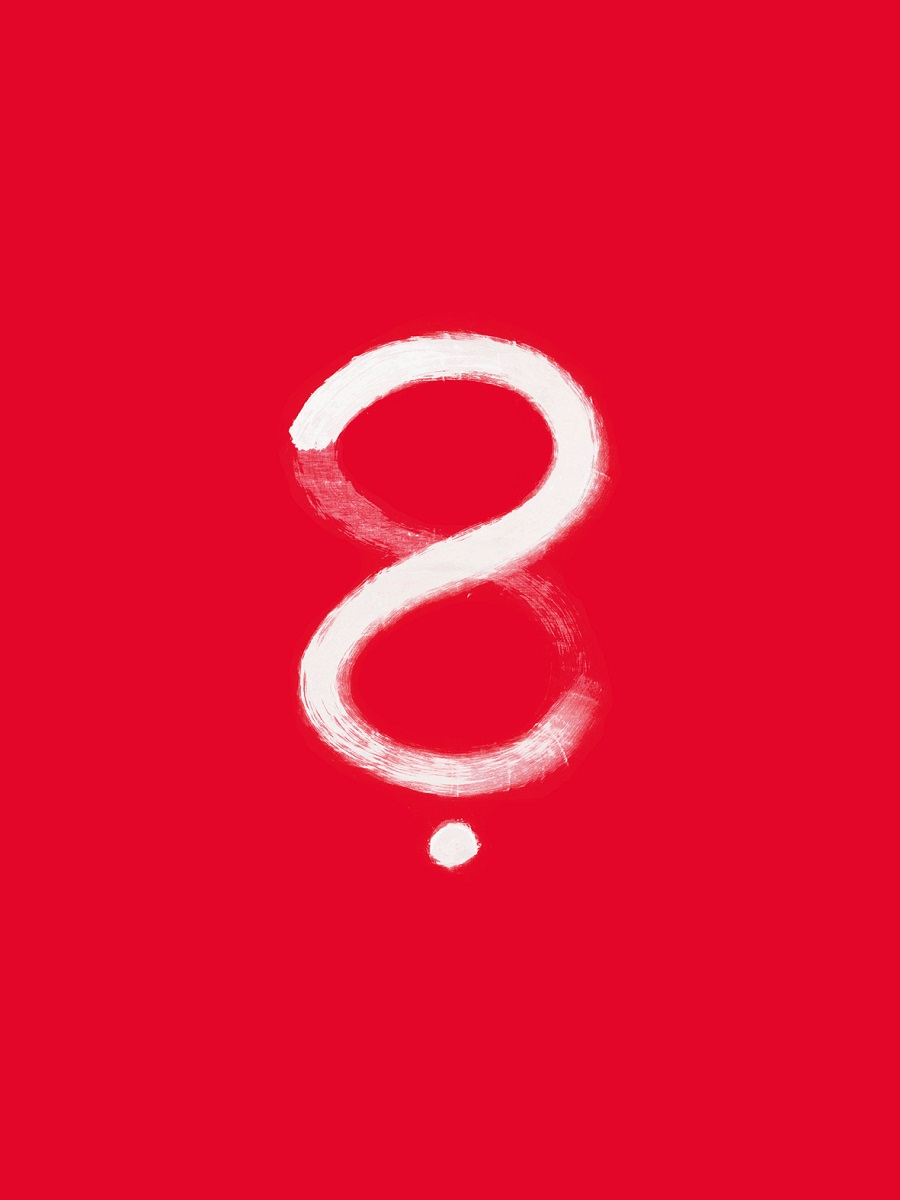Exhibition: My sweet little lamb (Everything we see could also be otherwise), sixth episode
My sweet little lamb (Everything we see could also be otherwise)
a series of exhibitions based on the Kontakt Art Collection
dedicated to Mladen Stilinović
sixth episode
Curators:
Što, kako i za koga/WHW,
Kathrin Rhomberg
12/04 – 06/05/2017
Dom hrvatskih likovnih umjetnika

Július Koller, Upitnik kulturna situacija (U.F.O.), 1992
Exhibition opening: Wednesday, April 12, 2017
By summarizing previous investigations, the sixth episode is staged as the project’s finale at the Home of the Croatian Association of Artists/HDLU, where incidentally the first WHW exhibition took place in 2000 under the title What, How & for Whom, on the occasion of the 152nd anniversary of the Communist Manifesto, setting the course of all our future activities. The sixth episode also includes the two key project venues for the previous episodes – Apartment Softić and Gallery Nova. After a number of dispersed presentations throughout the city, the choice of HDLU as a main venue for the final episode was strategic: its size enables us to create a direct dialogue among the large number of works from the Kontakt Art Collection, and just a brief glimpse at its history sheds a significant light on the interconnectedness of art institutions and social circumstances. HDLU is, after all, one of the most historically laden buildings in Zagreb.[1]
The exhibition display structures in HDLU were conceptualized by David Maljković and Ana Bakić. Rather than trying to appease the tensions that often form between contemporary artworks and the circular space of the Meštrović Pavilion, whose architecture, in its majestic neo-classicism, was already anachronistic when it was built, they decided to confront its difficulties directly. In this exhibition, Maljković’s artistic methodologies of creating an estrangement effect through “unsuitable” spatial constellations and the dislocation of the spectator’s expectations are visible at the very entrance to the Ring Gallery, where the imposing presence of a large counter-intuitively positioned wall requires visitors to immediately “choose a side”, and emphasises the impossibility of easily grasping the exhibition in its totality. In other exhibition areas, works are placed on fragments of earlier exhibition structures that have been torn down and built upon, transfigured and transformed, and there is an impression of being amidst the process of dissolving and rebuilding.
The final stage of the project in Zagreb does not attempt to tie up loose ends or provide answers to questions posed by previous episodes. At the facade, over the entrance to the building, visitors are greeted by Question Mark Cultural Situation (U.F.O.) by Július Koller, announcing the exhibition’s openness to different interpretations, and its accentuation of poetic lines of inquiry. Issues of openness, processuality and the translation of personal ontologies into proposals for collective action are explored at Gallery Bačva in HDLU in the installation White Space in a White Space, developed by Stano Filko with Miloš Laky and Ján Zavarsky, which will be installed during the opening by Boris Ondreička and Ján Zavarsky. The Cakes by Mladen Stilinović creates a trail, or an invitation, to the upper floor galleries. The practice of creating unexpected juxtapositions, introduced in earlier episodes, continues here, and many of the works that were shown previously, such as the sculptures of Mária Bartuszová or the blue line by Edward Krasiński, are exhibited again in different constellations. Repurposing and the dehierarchization of content and of the art object, used as a method by many artists in the exhibition is taken as one of the principles of the set-up as a whole – one of the projection boxes designed by Josef Dabernig for his exhibition at Gallery Nova in the fourth episode is transferred to HDLU and, following discussion with the artist, repurposed for the display of works by other artists.
[1] It was designed by Croatian sculptor Ivan Meštrović and opened as an art space called House of the Visual Arts of King Peter I the Great Liberator in 1938. The name was shed just a few years later when the building was turned into a Mosque by the Croatian Nazi puppet state during WW2. Under socialism, it was the Museum of Socialist Revolution until 1990 when it was emptied of historical content and brought back to its current function as a Kunsthalle, most recently referred to as Meštrović Pavilion.
WHW i Kathrin Rhomberg
Artists in the sixth episode (HDLU):
Paweł Althamer, Mária Bartuszová, Pavel Brăila, Geta Brătescu, Josef Dabernig, Marijan Detoni, Stanisław Dróżdż, Nika Dubrovsky, Róza El-Hassan, Miklós Erdély, Tim Etchells, VALIE EXPORT, Stano Filko, Heinz Gappmayr, Tomislav Gotovac, Ion Grigorescu, Sanja Iveković, Běla Kolářová, Julije Knifer, Daniel Knorr, Július Koller, Jiří Kovanda, Paweł Kwiek, Ivan Kožarić, Katalin Ladik, Victoria Lomasko, David Maljković, Karel Malich, Dorit Margreiter, Vlado Martek, Dalibor Martinis, Dóra Maurer, Karel Miler, Jan Mlčoch, Paul Neagu, OHO, Roman Ondak, Boris Ondreička/Ján Zavarský/Vit Havranek, Neša Paripović, Cora Pongracz, Nedko Solakov, Margherita Spiluttini, Tamás St. Auby, Mladen Stilinoviċ, Sven Stilinović, Petr Štembera, Raša Todosijević, Slaven Tolj, Goran Trbuljak, Mona Vătămanu i Florin Tudor, Clemens von Wedemeyer, Lois Weinberger, Heimo Zobernig
More information about exhibitions in the apartment Softic and Nova Gallery
Exhibition catalog in English
Working hours:
Monday, Tuesday, Wednesday, Friday: 11 – 20h
Thursday: 11 – 22h (18 – 22h free entry)
Saturday, Sunday: 10 – 18h
Saturday, May 6: 10 – 21
Closed on holidays
Dom HDLU
Trg žrtava fašizma 16
10000 Zagreb
The exhibition was financially supported by Erste Foundation, the City Office for Culture, Education and Sport Zagreb, Foundation for Arts Initiatives, Kultura Nova Foundation, Austrian Cultural Forum
Rss feed
Trg žrtava fašizma 16, 10000 Zagreb, Croatia
tel: 385 1 /4611 818 / 4611 819
fax: 4576 831, E-mail: hdlu@hdlu.hr
Trg žrtava fašizma 16, 10000 Zagreb
Tel: 385 1 46 11 818, 385 99 732 6127
E-mail: pm.hdlu@gmail.com
Gallery Barrel, Trg žrtava fašizma 16, Zagreb
tel: 385 1 4811 561, 385 98 982 8989
E-mail: hdlu.hr@gmail.com





